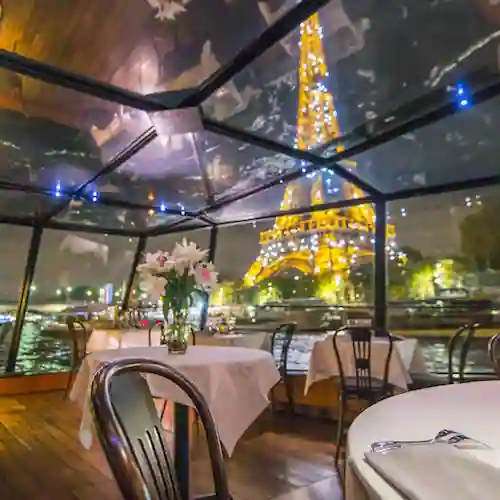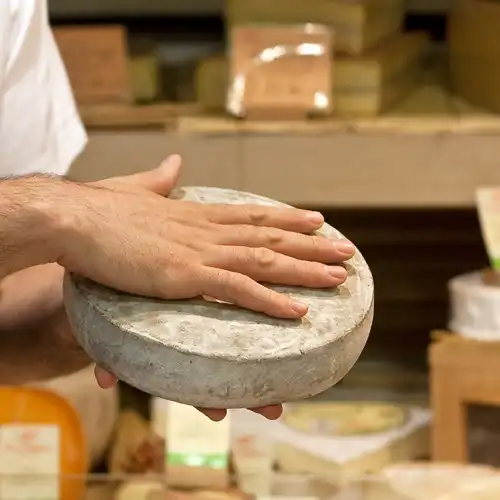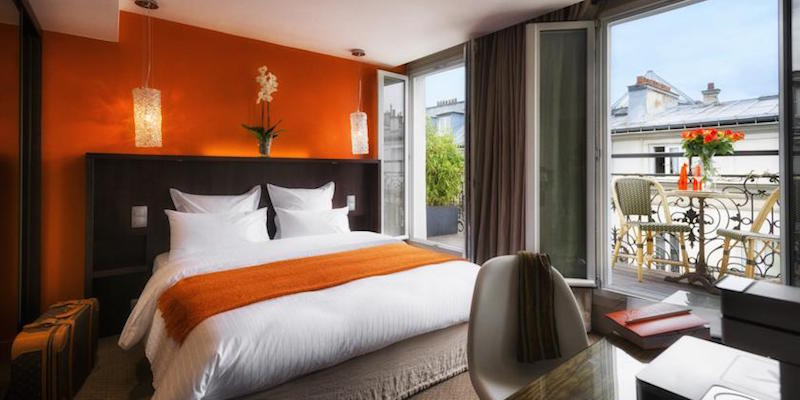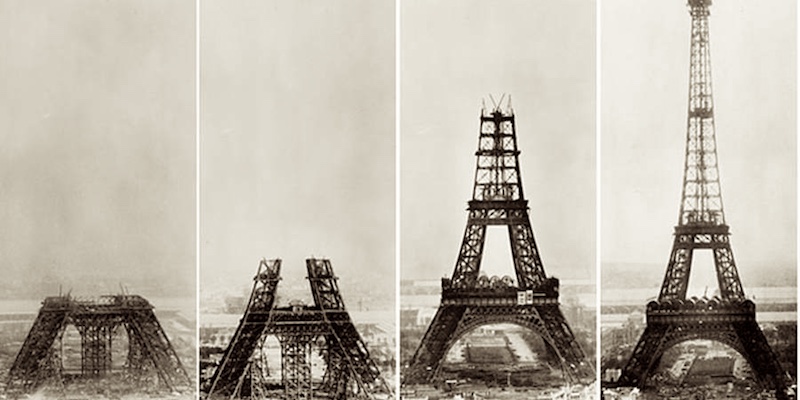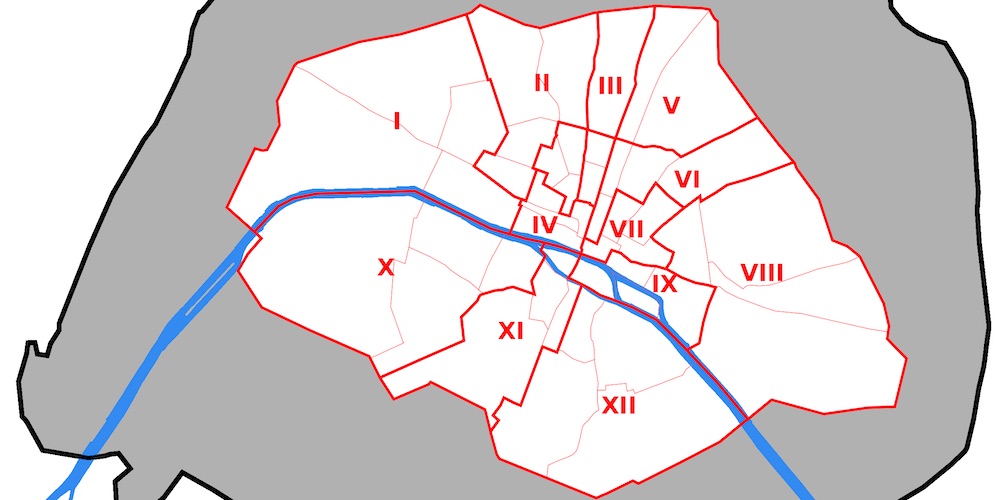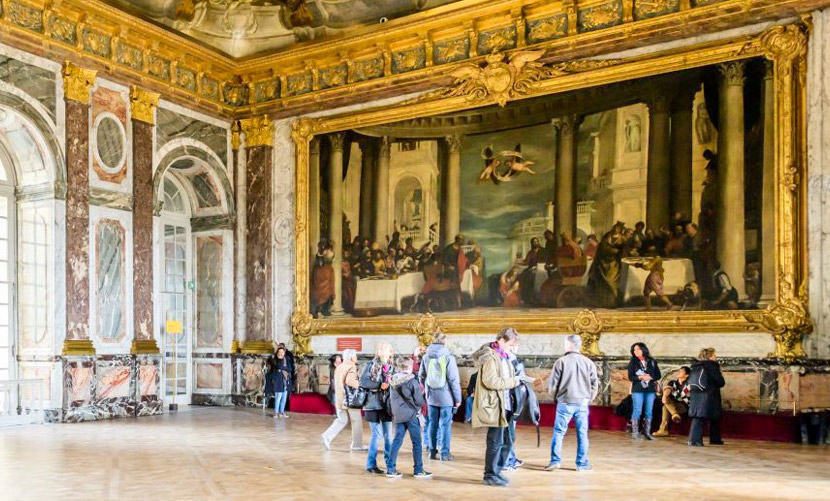Stop Signs & Sundials – Nine Things You Didn't Know About Paris
There's alway something more to discover about Paris. No matter how many times you've visited, no matter how long you might have lived here. Paris is simply that kind of place. So, with some help from the folks at the City of Paris, we've compiled these fascinating facts you can casually mention to amuse — or irritate! — the guests at your next posh dinner party.
![]()
Discover What's On When You're Here...
• January... |
• February... |
• March... |
• April... |
• May... |
• June... |
• July... |
• August... |
• September... |
• October... |
• November... |
• December... |
Discover What's On When You're Here
• January...
|
• February... |
• March... |
|---|---|---|
• April... |
• May... |
• June... |
• July... |
• August... |
• September... |
• October... |
• November... |
• December... |
1. There's a Bunker Beneath Hotel de Ville
The wonderfully stately Paris city hall, the Hotel de Ville, sits on the river bank at the edge of the Marais. If you've ever hopped on the carousel on the Place de l'Hôtel-de-Ville or skated on the patinoire in the winter it's not likely you were aware that underground there is an emergency shelter — the result of scars left by two European conflicts.
The first scar was caused by the Commune of 1871. In the turbulence following the collapse of the empire of Napoleon III, rioting Communards sacked and burnt the Hotel de Ville. The building was rebuilt to an even grandeur scale in the years that followed, but the PTSD remained.
Then, during World War I, Église Saint-Gervais, located on Rue des Barres just behind the city hall, was hit by German shells during a bombardment of Paris, killing 88 people in the church.
So it was that, during the years between the two world wars, as political tensions in Europe began to rise once again, the French government built 250 bunkers under various administrative buildings in Paris, including the Hotel de Ville. Fortunately these underground safe rooms were never needed and are now used only for storage.
![]()
|
Paris Dinner Cruises on the Seine Dine in style as you glide past the Eiffel Tower, Notre-Dame, and the Louvre on a magical Seine River cruise. Gourmet food, champagne, and Paris lit up at night – it’s unforgettable. |
|
Paris Dinner Cruises on the Seine Dine in style as you glide past the Eiffel Tower, Notre-Dame, and the Louvre on a magical Seine River cruise. Gourmet food, champagne, and Paris lit up at night – it’s unforgettable. |
2. There Are No Stop Signs in Paris

The very last stop sign in Paris (reading, as we understand it, "Stop" and not "Arrêt") was taken down in 2013. It was on Quai Saint-Exupéry, in the far southwest of Paris, in the 16th Arrondissement along the Seine.
It's another example of Paris going its own way from the rest of France, since you still find these octagonal signs in most other French cities and in every town and village. "It's simply a pragmatic choice" said the Prefecture of Police, "making traffic more fluid." Out on the mean streets of Paris, traffic to the right has priority, even in the madcap traffic circles (or, roundabouts), like the Étoile around the Arc de Triomphe.
![]()
|
Escape to the Land of Bubbly on a small-group day tour from Paris. Taste at top Champagne houses, meet boutique producers, enjoy a leisurely lunch, and toast to a perfectly sparkling day. |
|
Escape to the Land of Bubbly on a small-group day tour from Paris. Taste at top Champagne houses, meet boutique producers, enjoy a leisurely lunch, and toast to a perfectly sparkling day. |
3. Paris Had a Black Mayor… in 1879
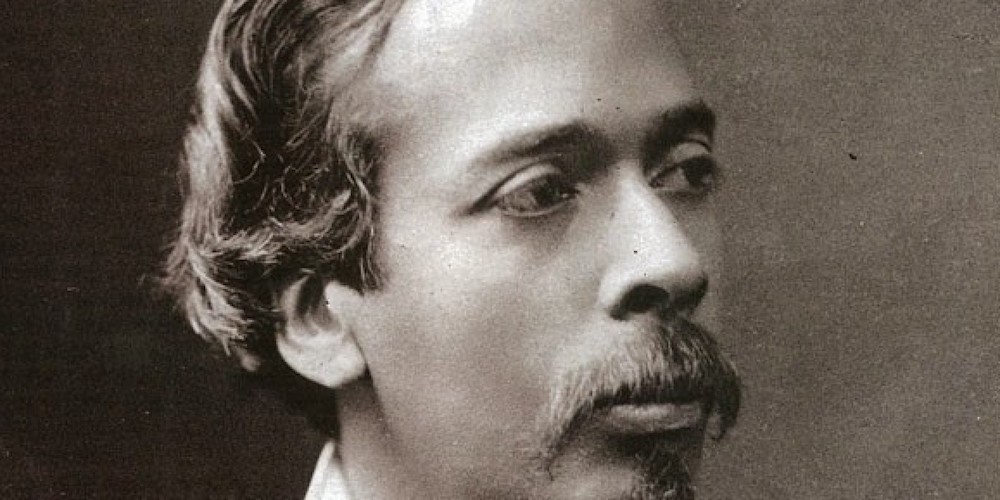
Well, actually, the office of the Mayor of Paris was only created in 1977. But, if we look at the highest-ranking civic official we find that Severiano de Heredia was elected President of the Paris City Council on August 1, 1879, the closest equivalent of the post of mayor. In fact, de Heredia was the first black mayor of any capital city in the western world.
De Heredia (1836-1901) was the son of freed slaves of Cuban origin who was sent to live and study in France from the age of ten. He was only president of the city council for a few months, but later served a short time as the country's prime minister. It was not until 2013 that his city service was honored with a street in the 17th Arrondissement renamed for him, a street near the Batignolles cemetery where he lies buried in virtual anonymity.
![]()
|
Browse our hand-picked Paris hotel deals with real-time discounts of up to 20%. Stay in the Marais, Saint Germain, the Latin Quarter, the Left Bank near the Eiffel Tower… every arrondissement is on the list. |
|
Browse our hand-picked Paris hotel deals with real-time discounts of up to 20%. Stay in the Marais, Saint Germain, the Latin Quarter, the Left Bank near the Eiffel Tower… every arrondissement is on the list. |
4. The Koechlin-Nouguier Tower
The Kechlin-Nouguier Tower — not as catchy a name as, say, the Eiffel Tower, is it? But, if this monument had been named after its inventors, then the K-N Tower it would be.
For the 1889 Paris Universal Exposition, France wanted a grandiose project to celebrate the 100th anniversary of the French Revolution and also to demonstrate that the country had gloriously revived following the Franco-Prussian War (which it ingloriously lost). Engineers Émile Nouguier and Maurice Koechlin were employed in the workshop of master ironworker and bridge builder Gustave Eiffel when they came up with the idea for a 300-metre tower by essentially putting some bridge spans back to back and pointing them skyward.
But, it was Eiffel's shop, he owned the patent, and he got the everlasting glory. Read the history of the Eiffel Tower.
![]()
|
Trade Paris bustle for royal grandeur on a guided Versailles tour. Skip the lines, wander the gardens, and peek inside Marie Antoinette’s private estate. History never looked this good. |
|
Trade Paris bustle for royal grandeur on a guided Versailles tour. Skip the lines, wander the gardens, and peek inside Marie Antoinette’s private estate. History never looked this good. |
5. The World's Largest Sundial Is Found in Central Paris
The seventy-five foot ancient Egyptian obelisk in the centre of Place de la Concorde at the far end of the Tuileries was gifted to France by the viceroy of Egypt, Mohammed Ali Pasha, in 1830. Built in the 13th century BCE at the temple of Luxor — making it by far the oldest monument in Paris — the obelisk was dedicated by French king Louis-Philippe on October 23, 1836.
As part of the celebration of the millennium (the year 1999 turning into 2000) stones engraved with Roman numerals were placed around Place de la Concorde. Thus, 3,300 years after it was created, the obelisk of Luxor was turned into a timekeeper of sorts with markings indicating the solstices, the equinoxes, and even the hours of the day, as marked on the pedestrian pathways in bronze-colored bands and, on the street, by 400 bronze nails.
The downside is that the hourly timekeeping is only really accurate on the dates of the solstices and equinoxes. So, don't give away your watch quite yet.
6. Paris Initially Had Twelve Arrondissements
It was during the reorganization of… well, everything… following the French Revolution that Paris was first divided into twelve arrondissements — nine on the Right Bank and three on the Left Bank. That came into force with the law of October 11, 1795 (or Vendémiaire 19 of Year IV, using the Revolutionary calendar that was later abandoned under Napoleon).
It was only under another Napoleon — Emperor Napoleon III — during Baron Haussmann's massive renovation of Paris that towns and villages surrounding Paris were annexed, brought under the city's jurisdiction, and designated as arrondissements. All that happened in about 1860.
The municipality of Belleville became part of the 19th and 20th arrondissements; Grenelle and Vaugirard were folded into the newly-designated 15th, and so on to create twenty arrondissements we now know. The grey area in the map above shows the size of Paris today (without the inclusion of Bois de Boulogne or Bois de Vincennes).
![]()
|
Taste Your Way Through The Marais Stroll the cobbled streets of the Marais while tasting your way through cheese shops, bakeries, wine cellars, and hidden gems. A local expert leads the way — and keeps the wine flowing. |
|
Taste Your Way Through The Marais Stroll the cobbled streets of the Marais while tasting your way through cheese shops, bakeries, wine cellars, and hidden gems. A local expert leads the way — and keeps the wine flowing. |
7. The 16th Arrondissement Should Have Been the 13th

When the twenty arrondissements were created in 1860, their numbering was from left to right, in two rows, similar to the twelve-arrondissement layout we saw in the previous map. But that didn't sit well with the inhabitants of the new arrondissement that had formerly been the municipality of Passy, across the Seine to the west. Their new number would have been thirteen.
Their unhappiness was not just because of age-old superstitions around the number 13, but also due to an expression current in early 19-century Paris. Most marriages were performed at the town hall (la mairie) of the couples' arrondissement. The expression "married at la mairie of the 13th" meant that the couple in question were living together without being married. (Since there were only twelve arrondissements at the time.) This was a sly way of condemning those couples in times that were more puritanical than ours.
In the end, the wealthy citizenry of Passy had their way and a new numbering system was devised that ran clockwise in a spiral from the heart of the city, as shown in the modern map just above.
8. The 1st, 2nd, 3rd & 4th Arrondissements Have Disappeared!

Paris doesn't have twenty arrondissements, it now has only seventeen. In the summer of 2020 the center of Paris — the arrondissements with the smallest numbers and including the islands — were amalgamated into a new administrative district called Paris Central, with the (former) mairie of the (former) 3rd Arrondissement becoming the home of the new district mayor and council, elected on July 11, 2020.
This makes administrative sense when you consider that the combined population of the new Paris Centre is just over 100,000, while the larger arrondissements (like the "unlucky" 13th and the 20th) have populations of close to, or over, 200,000. In geographic area the situation is similar. The total size of Paris Centre is 5.59 sq-km, while the outer arrondissements range from 5.62 (14th) to 8.50 (15th).
We don't know about you, but this administrative conglomeration is not going to change our warm feelings about those ancient neighborhoods. And, as far as we're concerned, Pluto's still a planet!
![]()
Our Top-Rated Paris Experiences
9. Sacre Coeur Is Becoming Whiter Over Time
Sitting majestically at the top of Montmartre, Basilique du Sacre Coeur maintains a dazzling whiteness a century after its completion. While other Parisian monuments suffer ravages of time and pollution, Sacre Coeur not only resists these attacks, but is actually getting whiter!
That's because of the type of stone used to build the church. From a quarry in a place called Château-Landon, about 100 kilometres south of Paris. These building stones actually get harder and whiter under the combined action of rain and sun. When it rains the stone excretes a white chalky substance that acts like a fresh coat of paint.
Paris Planning Guides
 Skip-the-line Louvre Tour
Skip-the-line Louvre Tour |
 Latin Quarter Hotels
Latin Quarter Hotels |
 Historic D-Day Tours
Historic D-Day Tours |
 Glorious Dinner Cruises
Glorious Dinner Cruises |




